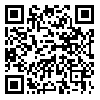Volume 10, Issue 4 (2023)
CLRJ 2023, 10(4): 131-155 |
Back to browse issues page
Download citation:
BibTeX | RIS | EndNote | Medlars | ProCite | Reference Manager | RefWorks
Send citation to:



BibTeX | RIS | EndNote | Medlars | ProCite | Reference Manager | RefWorks
Send citation to:
Mahdavi M, Tahmasbi F. The Influence of Pollock's Mental Stereotypes on His Travelogue. CLRJ 2023; 10 (4) :131-155
URL: http://clrj.modares.ac.ir/article-12-62457-en.html
URL: http://clrj.modares.ac.ir/article-12-62457-en.html
1- PhD student in Persian language and literature , roshanandishan.publisher@gmail.com
2- Member of the Faculty of Islamic Azad University, Islamshahr branch
2- Member of the Faculty of Islamic Azad University, Islamshahr branch
Abstract: (601 Views)
Travelogues are among the sources of various literary styles that provide important information about the historical, cultural, artistic, and anthropological background of a country through the images recorded by the travelogue, so far as they have a great contribution in the social-historical reconstruction of a country. The simple and stereotyped definition of imagery or imagology, which has an interdisciplinary approach in comparative literature, is the study of another image in one's own literary texts and vice versa, that is, the study of one's own image in other literary texts. The more accurate the view of the travelogue writer is, the more comprehensive the report he presents in his travelogue is whcih increases its credibility. The correct transmission of this information also helps the accuracy of the travelogue. If a writer is not careful in any of these steps, knowingly or unknowingly, he will make a mistake in accurately recording the reports and the truth, or a part of it will be neglected. On the other hand, we cannot ignore the influence of stereotypes and mental sediments of the writer on what he writes. For these reasons, there is not much expectation from literary texts to reveal reality and facts, and in this sense, literary works cannot be compared with facts and scientific studies. Pollack's travelogue; Iran and Iranians includes the description of pictures that Pollock, an Austrian doctor, saw and wrote in Iran. These observations, which go back to the end of the Qajar period during the reign of Naser al-Din Shah, are divided into two general parts: the first part includes the number of people, geography, customs and eating habits, clothing, etc.; the second part includes the government system, the court, and court occasions, diseases, medicine and treatment methods, medicines, etc. Pollak's claim is that he wrote the contents of his travelogue accurately and without bias or mistakes; however, this study revealed that such as claim is not very accurate.
Keywords: Comparative literature, imagology, Travelogues, Jakob Eduard Polak (Persien, das Land und seine Bewohner), stereotype.
Article Type: Original Research |
Subject:
Comparative research
Received: 2022/06/25 | Accepted: 2023/03/1 | Published: 2023/03/1
Received: 2022/06/25 | Accepted: 2023/03/1 | Published: 2023/03/1
Send email to the article author
| Rights and permissions | |
 |
This work is licensed under a Creative Commons Attribution-NonCommercial 4.0 International License. |








